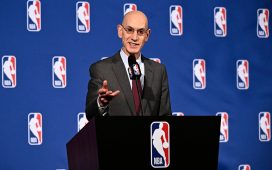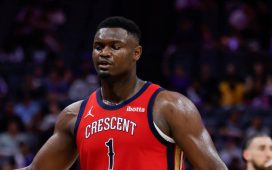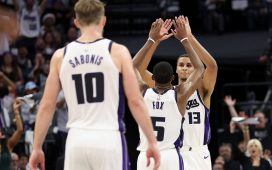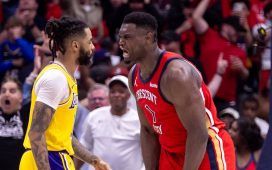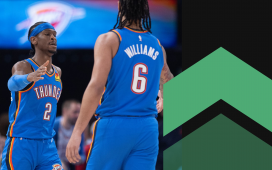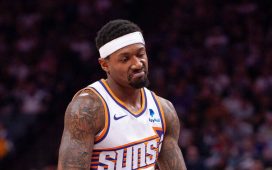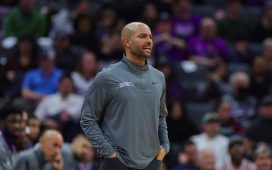With LeBron James recently inking a two-year, $97.1 million dollar contract extension with the Los Angeles Lakers, an arcane NBA salary-cap quirk known as the “over-38 rule” has come into focus.
While there are other benefits for James to sign a short-term extension — James kept the flexibility of a player option in 2024-25 that could allow him to play with his son, Bronny, when the younger James is eligible to be drafted into the league — the over-38 rule meant he had no choice but to do so.
What is the over-38 rule, why was it introduced and why does it matter? Let’s break it down.
What is the over-38 rule?
It’s a provision in the NBA’s collective bargaining agreement that limits teams from offering contracts lasting four or more years to any player who is at least 38 years old or will turn 38 during the contract. This collective bargaining agreement bylaw initially began as the over-35 rule in 1995, agreed upon by the NBA and NBA Players Association, eventually becoming the over-36 rule.
In 2016, NBPA president Chris Paul successfully proposed to have the age limit pushed to 38 years old.
Why is James subject to the over-38 rule?
James will turn 38 on Dec. 30, making him ineligible to sign a deal for four or more years. Because his deal is an extension on his current contract, which ran through 2022-23, James couldn’t sign more than a two-year extension.
Is there any way around the over-38 rule?
The only exception to the rule is if a team has that player’s Bird rights and the player is 35 or younger before Oct. 1. Those contracts can last one year longer than if the team did not possess that player’s Bird rights.
The reason that the date is Oct. 1 rather than opening night is because that marks the official beginning of the season for salary purposes. Any player whose 38th birthday falls after that date on the fourth year of their contract is not eligible to sign a four-year (or more) contract unless their team had their Bird rights.
Wait, what are Bird rights?
This is a salary-cap exception named after Boston Celtics Hall of Famer Larry Bird. When the salary cap was first introduced in the NBA, it was intended to be a hard cap — meaning no franchise would be allowed to spend more than the allotted amount. The league instead made an exception for Bird, who in 1983 signed a seven year, $15 million contract to stay in Boston. The deal at the time was considered to be massive. Since the league made an exception for Bird to remain with the Celtics, his name has since been synonymous with the exception.
Bird rights allow a team to exceed the salary cap to re-sign a player already on their team to a first-year salary up to the current league maximum. The caveat: they must have played for the team in each of the three consecutive seasons prior. Bird rights also take effect if a player is traded during a contract with at least three guaranteed years, or is picked up off waivers during the first year of the deal.
Why was the over-38 rule introduced?
The over-38 rule was created to address a contract loophole, preventing front offices from exploiting salary cap space to offer more money over more years than they believed the player could play before retiring. It’s also seen as a type of insurance to disincentivize players nearing retirement from seeking contracts that could potentially pay them past the time of their retirement.
Why does the over-38 rule matter?
Despite being one of the most obscure rules included in the CBA, the over-38 rule is one that players and agents alike must be mindful of when looking to secure lucrative, long-term deals. There are vast ramifications for team-building based on age and the amount of money a franchise can offer players in contract negotiations.
When Kevin Durant was eligible for an extension with the Brooklyn Nets in 2021, he and Brooklyn agreed to a four-year, $198 million contract. Durant, who will turn 37 during the final year of his current contract, couldn’t sign a five-year deal at the time because he had only played two years in Brooklyn. But the over-38 rule also prevented the two-time Finals MVP from waiting a year and signing a new five-year deal in the summer of 2022, since he would’ve been 38 at the end of that contract. Since he was limited to signing through 2026 on an extension or new deal, Durant decided to lock in his money in the fall of 2021.
That decision had lasting ramifications. Had Durant avoided signing that four-year extension, he may have been able to leave the Nets in free agency rather than having to demand a trade. (His initial contract after leaving the Warriors in 2019 included a fourth-year player option).
On the flip side, the Phoenix Suns and Paul agreed to a four-year, $120 million deal the same offseason. Paul, whose deal will expire when he’s 40, was eligible to sign for four years because the Suns have his Bird rights, since Paul came to Phoenix via a trade in the middle of an existing long-term contract. The 12-time All-Star was dealt to Phoenix prior to the start of the 2020-21 season, when he was 35 years old. Because the Suns had his Bird rights, they could adhere to the over-38 rule and pay him until he turns 40.
(Photo: Gary A. Vasquez / USA Today)

